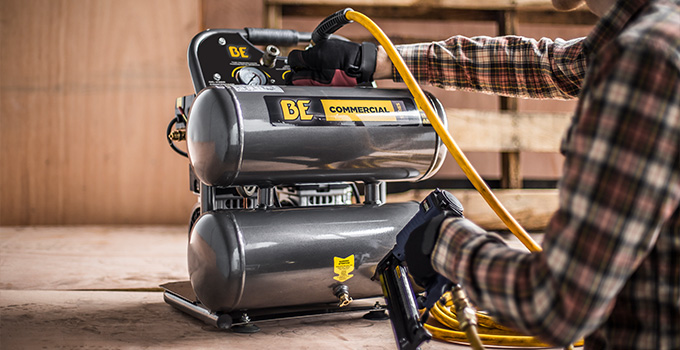
You’ll discover air compressors utilized in a wide scope of circumstances—from corner service stations to significant assembling plants. What’s more, to an ever-increasing extent, air compressors are finding their way into home workshops, storm cellars, and carports. Models measured to deal with each activity, from blowing up pool toys to control devices, for example, pneumatic nailers, sanders, drills, sway wrenches, staplers and splash weapons are presently accessible through nearby home focuses, device vendors and mail-request lists.
Water condensation is a characteristic event and a side-effect of packing air. The measure of water delivered by an air compressor is generally reliant on the bay condition, the nature of the surrounding air in a given situation, just as weight. In less difficult terms, air temperature, moistness, compressor size, and required weight will decide the water content leaving the unit and potentially into the packed air funneling. Naturally, hot and moist air has a higher dampness content than cold air, it will bring about more water leaving the compressor.
Separators
The most fundamental weapon against air compressor spraying water is to sift it through utilizing a straightforward air channel. There’s a huge amount of water in the air, and we need to make that negligible. An air channel will clean the air and haul out a portion of the water that is in the line so it doesn’t go straightforwardly to your devices. These are modest, straightforward devices that will rapidly pay for themselves in upkeep reserve funds. Notwithstanding, their viability is fairly restricted.

Water Is A Problem
The blend of water and the soup of pollution from the collector, couples with any contaminants in the fundamental airlines (rust from the funnels/pipe dope, and so forth.) to send a slurry of muck down through your air valves, to the actuators, or into your air apparatuses. At the point when the air-utilizing gear stops, and when the working raised temperatures cool, the muck soup dries. It solidifies into a varnish-like consistency that successfully stops the activity of a portion of your control and actuator gear. Next time you go to begin the machine, it may not begin, or it may not by any means run.
Proper Draining
Turn the compressor off. Ensure it’s totally turned off, and ideally unplugged.
Lessen the weight. You don’t need air blasting out the channel. Utilize the security valve to diminish the weight until it’s under 10 PSI.
Prep for water. Discover the valve (on the base of the tank) and, if important, place something underneath it to get the water.
Open the valve. Simply open it gradually and allow the water to deplete out. When done, tip the tank at a couple of edges to urge each and every drop to turn out.
Close the valve. Utilize the compressor as standard once more. This may appear to be an easy decision. You’d be amazed at what number of individuals overlook this, at that point wonder why their weight doesn’t develop a short time later.
Over the top dampness in compacted air can effectively affect the office and imperil the adequacy of activities. Untreated condensation in compacted air can harm and make issues pneumatic systems, air engines, valves, just as any parts or machines associated with the framework and perhaps sully the procedure or assembling of the finished result.